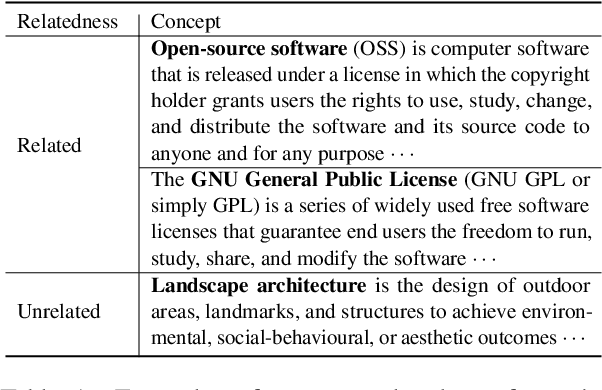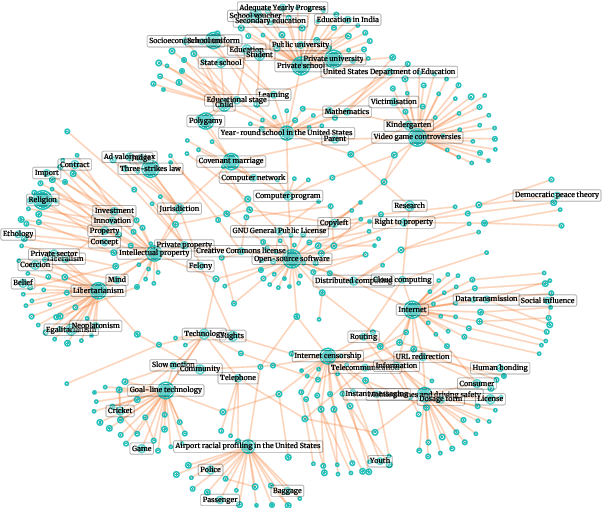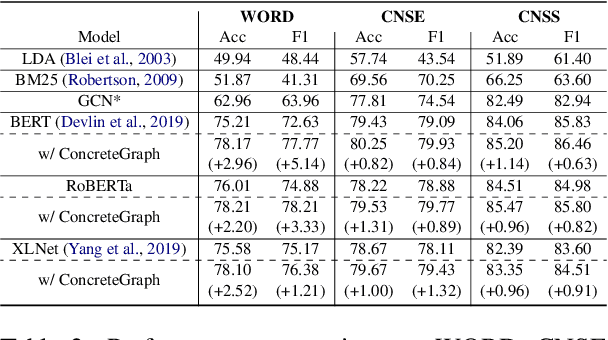ConcreteGraph: A Data Augmentation Method Leveraging the Properties of Concept Relatedness Estimation
Paper and Code
Jun 25, 2022



The concept relatedness estimation (CRE) task is to determine whether two given concepts are related. Although existing methods for the semantic textual similarity (STS) task can be easily adapted to this task, the CRE task has some unique properties that can be leveraged to augment the datasets for addressing its data scarcity problem. In this paper, we construct a graph named ConcreteGraph (Concept relatedness estimation Graph) to take advantage of the CRE properties. For the sampled new concept pairs from the ConcreteGraph, we add an additional step of filtering out the new concept pairs with low quality based on simple yet effective quality thresholding. We apply the ConcreteGraph data augmentation on three Transformer-based models to show its efficacy. Detailed ablation study for quality thresholding further shows that even a limited amount of high-quality data is more beneficial than a large quantity of unthresholded data. This paper is the first one to work on the WORD dataset and the proposed ConcreteGraph can boost the accuracy of the Transformers by more than 2%. All three Transformers, with the help of ConcreteGraph, can outperform the current state-of-theart method, Concept Interaction Graph (CIG), on the CNSE and CNSS datasets.
 Add to Chrome
Add to Chrome Add to Firefox
Add to Firefox Add to Edge
Add to Edge